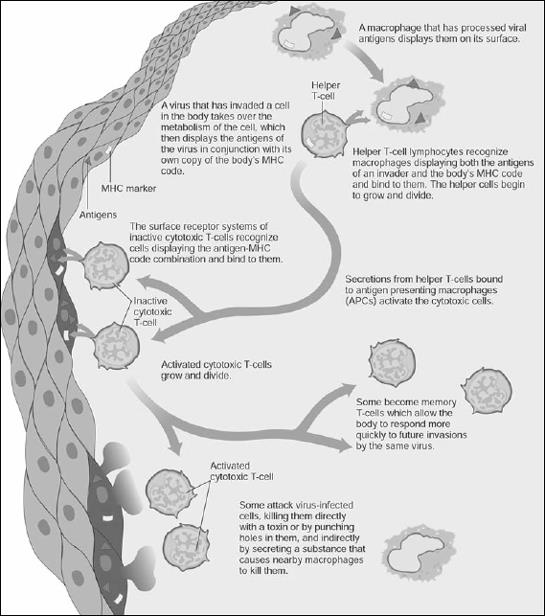Human BodyBlood and Circulation |
How do T cells differ from B lymphocytes? |
Lymphocytes are one variety of white blood cells and are the primary cells of the lymphatic system—the body’s immune system. The immune system fights invading organisms that have penetrated the body’s general defenses. T cells, responsible for dealing with most viruses, for handling some bacteria and fungi, and for cancer surveillance, are one of the two main classes of lymphocytes. T lymphocytes, or T cells, compose about 60 to 80 percent of the lymphocytes circulating in the blood. They have been “educated” in the thymus to perform particular functions.
Killer T cells are sensitized to multiply when they come into contact with antigens (foreign proteins) on abnormal body cells (cells that have been invaded by viruses, cells in transplanted tissue, or tumor cells). These killer T cells attach themselves to the abnormal cells and release chemicals (lymphokines) to destroy them.
Helper T cells assist killer cells in their activities and control other aspects of the immune response. When B lymphocytes, which compose approximately 10–15 percent of total lymphocytes, contact the antigens on abnormal cells, the lymphocytes enlarge and divide to become plasma cells. Then the plasma cells secrete vast numbers of immunoglobulins or antibodies into the blood, which attach themselves to the surfaces of the abnormal cells, to begin a process that will lead to the destruction of the invaders. NK (natural killer) cells account for the remaining five to ten percent of the circulating lymphocytes. They attack foreign cells, normal cells infected with viruses, and cancer cells that appear in normal tissues.

